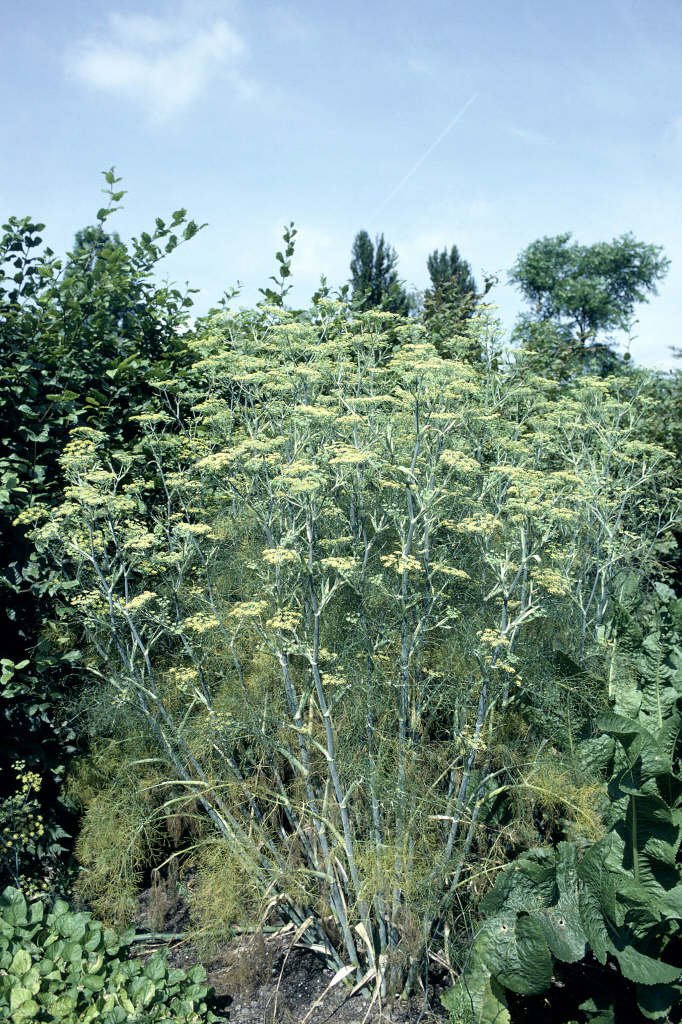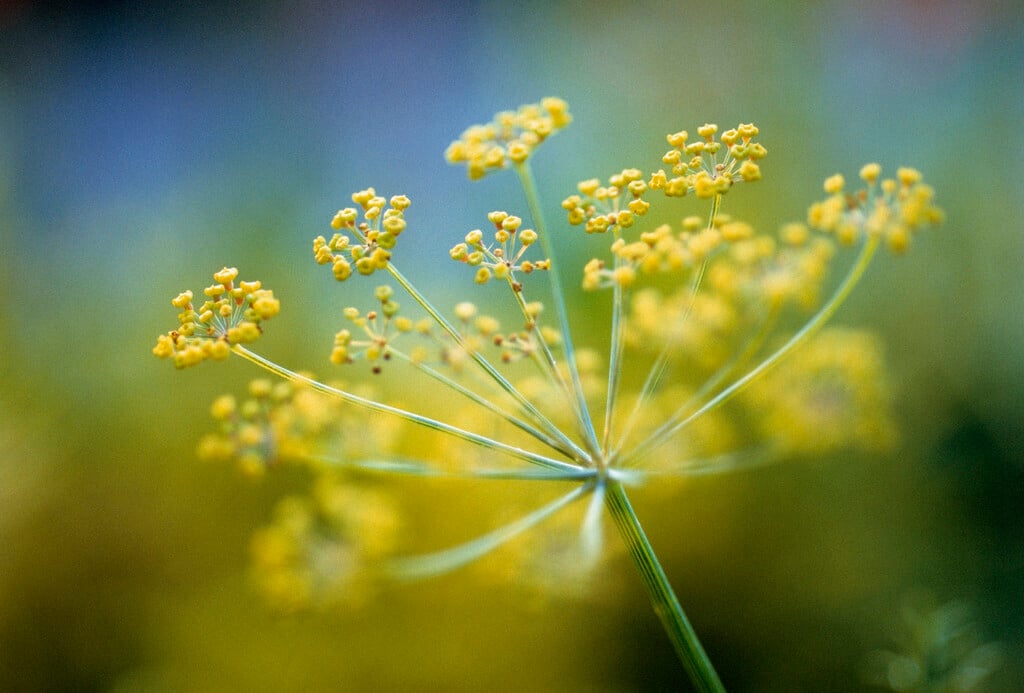Foeniculum vulgare
common fennel
Robust, upright, aromatic perennial plant to 1.8m tall, with 3 to 4 pinnate mid-green leaves composed of hair-like segments, and branching stems bearing flat umbels of small yellow flowers in summer; both leaves and fruits are aniseed-scented
Size
Ultimate height
1.5–2.5 metresTime to ultimate height
2–5 yearsUltimate spread
0.1–0.5 metresGrowing conditions
Moisture
Moist but well–drainedpH
Acid, Alkaline, NeutralColour & scent
| Stem | Flower | Foliage | Fruit | |
| Spring | Green | |||
|---|---|---|---|---|
| Summer | Yellow | Green | ||
| Autumn | Green | Green | ||
| Winter |
Position
- Full sun
Aspect
South–facing or West–facing
Exposure
Sheltered Hardiness
H5Botanical details
- Family
- Apiaceae
- Native to GB / Ireland
- Yes
- Foliage
- Deciduous
- Habit
- Bushy, Clump forming
- Genus
Foeniculum is a large biennial or perennial with aromatic, finely dissected leaves and umbels of small yellow flowers, followed by aromatic fruits
- Name status
Correct
- Plant range
- Mediterranean
How to grow
Cultivation
Grow in moist but well-drained, fertile soil in full sun. May have the potential to become a nuisance if not managed well. See fennel cultivation for further advice
Propagation
Propagate by seed. See sowing vegetable seeds
Suggested planting locations and garden types
- Gravel garden
- Architectural
- City and courtyard gardens
- Cottage and informal garden
- Mediterranean climate plants
- Patio and container plants
- Prairie planting
- Wildlife gardens
- Flower borders and beds
- Cut flowers
Pruning
No pruning required. Remove spent flower heads to prevent self-seeding
Pests
Diseases
Powdery mildews may occur
Love gardening
Sign up to receive regular gardening tips, inspiration, offers and more
View our Privacy Policy
Get involved
The Royal Horticultural Society is the UK’s leading gardening charity. We aim to enrich everyone’s life through plants, and make the UK a greener and more beautiful place.

